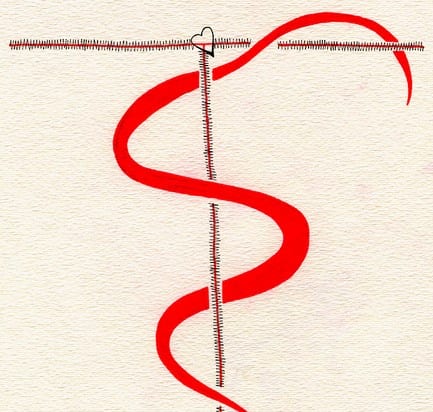
As a client seeking help from a mental health professional, one expects to have the ability to be open and honest with our thoughts, feelings, and emotions. As a mental health professional, one strives to create an environment that is safe and inviting for all conversations. When disclosing physical symptoms with our medical doctors we typically do so without fear of those details being revealed to others because of the legal and ethical ideal of doctor-patient confidentiality. Should this feeling of security be any different when divulging personal details to a mental health professional?
In 2010, the case of Volk vs. DeMeerleer made this application of confidentiality guidelines more complex. A treating psychiatrist was held liable in a patient’s homicidal actions. One of the fundamental questions of the case was the obligations of mental health professionals to protect third parties from the violent acts of their patients. Jan DeMeerleer was a patient of the psychiatrist, Dr. Howard Ashby, on and off over the course of 9 years. DeMeerleer voiced thoughts of harm both to himself and to others intermittently throughout his sessions over this time period. On what would be his last visit with Dr. Ashby, DeMeerleer did not mentioned any thoughts of violence. But a few months following this final appointment, DeMeerleer murdered his ex-fiancé, Rebecca Schiering, one of her children, and then committed suicide. Following their deaths, Schiering’s mother sued Dr. Ashby for not “mitigating DeMeerleer’s dangerousness or warning the victims.”
The case against Dr. Ashby was motivated by the idea that he should have tried to reduce the chances of harm to third parties or should have warned any targeted third parties of the possible danger that they were in. As the American Medical Association put it, physicians face both an “ethical obligation to protect confidentiality with their patients and their legal responsibilities as a physician.” Dr. Ashby mentions in his notes from the final session with DeMeerleer the positive changes that he noticed in the patient. He observed the occasional suicidal thoughts that DeMeerleer experiences and noted that “at this point he’s not a real clinical problem, but that he’ll keep an eye out.” According to Baird Holm, “Volk is a somber reminder that mental health professionals should always be vigilant and, perhaps, err on the side of disclosing when a patient exhibits violent thoughts and behavior.” Should Dr. Ashby have blood on his hands if he didn’t truly see any potential danger during his last visit with DeMeerleer?
Those defending Dr. Ashby’s reluctance to share information about his patient place more importance on the norm of patient-doctor confidentiality. For doctors like Ashby, it is not uncommon to hear expressions of violent thoughts from people. Telling the difference between vague violent plans revealed in utterances and actionable threats is hard in practice. According to Troy Parks on the AMA Wire, the ruling against Dr. Ashby “requires a psychiatrist to do the impossible: predict imminent dangerousness in patients who have neither communicated recent threats, indicated intent to do harm, nor indicated a target for a potential threat.” Many believe that incorporating this possible risk when taking on new clients would have the potential to limit mental health professionals’ ability to treat patients. It may also make psychiatrists more reluctant to treat clients with difficult cases with a history of violence.
If doctors begin to report more threats observed in client communication, many would worry about the effect of this on other patients. Troy Parks poses the question of what happens “if patients no longer feel safe sharing personal—yet crucial—information with their physicians?” The American Psychological Association emphasized that patients need to feel comfortable talking about private and revealing information. They also mentioned that this should be a safe place for patients to talk about anything without fear of the information leaving the room. This in turn might affect the efficiency/effectiveness of mental health professionals. According to Jennifer Piel and Rejoice Opara, “The [AMA] Code strikes a balance in respecting confidentiality while providing an exception to allow disclosures of patient confidences under reasonable and narrow circumstances to protect identifiable third persons.” Yet the Ashby case throws this balance into question. How can doctors balance the need to create a level of confidence between the physician and the patient with the need to look out for the safety of others?
Discussion Questions:
- What are the ethical values in conflict in the Ashby case? Why are these general values important?
- On what side would you err: toward preserving confidentiality in questionable cases, or toward warning others (and consequently violating patient confidence)?
- Are there creative ways to uphold both the value of confidentiality and the safety of third parties?
Further Information:
American Psychological Association, “Protecting your privacy: Understanding confidentiality.” American Psychological Association. Available at: http://www.apa.org/helpcenter/confidentiality.aspx
Gene Johnson, “Killer’s psychiatrist can be sued by victim’s family, Washington Supreme Court says.” The Seattle Times, December 24, 2016. Available at: https://www.seattletimes.com/seattle-news/court-says-killers-psychiatrist-can-be-sued-by-victims-family/
Troy Parks, “Court case threatens physician-patient confidentiality.” AMA Wire, October 14, 2015. Available at: https://wire.ama-assn.org/practice-management/court-case-threatens-physician-patient-confidentiality
Troy Parks, “Patient-psychiatrist confidentiality hampered in liability ruling.” AMA Wire, January 4, 2017. Available at: https://wire.ama-assn.org/practice-management/patient-psychiatrist-confidentiality-hampered-liability-ruling
Jennifer L. Piel, JD, MD, and Rejoice Opara, MD, “Does Volk v DeMeerleer Conflict with the AMA Code of Medical Ethics on Breaching Patient Confidentiality to Protect Third Parties?” AMA Journal of Ethics, January 20, 2018. Available at: http://virtualmentor.ama-assn.org/2018/01/peer2-1801.html
Author:
Haley Turner
Media Ethics Initiative
University of Texas at Austin
April 27, 2018
Image: Daniel Friedman/CC BY-NC 2.0
This case study can be used in unmodified PDF form for classroom or educational settings. For use in publications such as textbooks, readers, and other works, please contact the Center for Media Engagement.
Ethics Case Study © 2018 by Center for Media Engagement is licensed under CC BY-NC-SA 4.0


